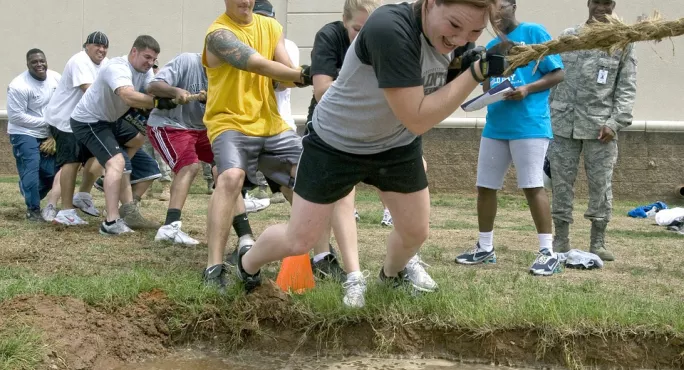- Home
- 4 ways to help students ‘bounce back’ this term
4 ways to help students ‘bounce back’ this term

We often talk about pupils being resilient or having resilience, as if it is an innate characteristic. But is this really the case?
In short, no. We have significant scope to support the development of resilience in students, and to achieve that dream of students with “bounce-back-ability”.
Research suggests that those who display the characteristics of resilience are able to manage academic demands to enable positive progress and cope with the pressure of study, work and life (Caruana, 2011) [1]. Whereas those who are “buoyant” (a subset of resilience) are specifically able to overcome an academic setback, such a poor test score (Martin et al, 2010) [2].
How to develop pupils’ resilience
Despite huge promise, the implementation of strategies such as growth mindset and other resilience-based training has not been as fruitful as anticipated. However, we do need to be aware of what we can do to upgrade our students’ skills in resilience and buoyancy, avoiding tokenistic gestures, and ensuring they are prepared for the certain uncertainty of the near future, and beyond.
Given the turmoil of the previous academic year, it is fair to say that many of our students have had their resilience and buoyancy tested. Some will have thrived, or at least coped relatively unscathed. However, for others, it will be a different story.
So how do we foster resilience in our students?
1. Relationships
This has become a contentious phrase in education, as a panacea for all ills. However, research from Bernard [3] suggests that “the presence of at least one caring person - someone who conveys an attitude of compassion, who understands that no matter how awful a child’s behaviour, the child is doing the best he or she can given his or her experience - provides support for healthy development and learning”, which is essential in developing and maintaining a resilient attitude in an educational setting. The stability of a class teacher in primary schools would provide this nurture, and the role of the form tutor in secondary school will cultivate this for older children.
2. High expectations
Students’ sense of self does not stem from an intrinsic source - often it is derived from the opinions of those around them. If we expect success from them, even in difficult tasks, and support them to achieve it, this will influence their sense of self. They will come to believe that they are someone who achieves, who can cope with difficulties and who is a success. Multiple researchers have identified that “victory over hardship heightens a sense of self-concept rather than challenging the ability to cope.” [4]
3. Healthy lifestyle
Holdsworth et al [5] identified the importance of a healthy lifestyle, including being physically active, in those who are highly resilient. Thus, now more than ever, having a key focus on physical education and sports participation, both within the curriculum and, where possible, during extracurricular time, can pay dividends in promoting resilience. Alongside being physically active, placing emphasis on how students can avoid being socially isolated, maintain healthy relationships and be free to celebrate their success is key to promoting health and subsequent resilience.
4. Goal setting and control
In order to reach a destination, pupils need to know where they are heading. That destination is not necessarily a job, a grade or a major future event, but could be to establish an effective independent learning schedule or to read at home each evening. Spending time to facilitate the goal-setting process, looking at strategies to achieve their destination, will provide them with a sense of control over their future. Collie et al [6] identified that if a setback is something internal, such as poor test score, as a result of insufficient studying time, students are more likely to alter their behaviour - ie, study more - whereas, when they lack control, for example, if they attribute their test score to an external factor, they are far less likely to alter their behaviour.
Louise Lewis is a research lead and deputy head of science in a Yorkshire secondary school. She tweets @MissLLewis
References
[1] Caruana, V et al (2011). Promoting students’ ‘resilient thinking’ in diverse higher education learning environments. The Higher Education Academy, Leeds Metropolitan University
[2] Longitudinal modelling of academic buoyancy and motivation: do the ‘5Cs’ hold up over time? Martin et al, 2010. British Journal of Educational Psychology (2010), 80, 473-496 q 2010, The British Psychological Society
[3] Fostering Resilience in Children. ERIC Digest. Benard, Bonnie, 1995
[4] Zolkoski, S, and Bullock, L (2012). Resilience in children and youth: A review
[5] Holdsworth, S, Turner, M, and Scott-Young, C. (2018) Not drowning, waving. Resilience and university: a student perspective’, Studies in Higher Education, 43(11), pp. 1837-1853
[6] Collie, RJ, et al. (2015). Academic buoyancy, student’s achievement, and the linking role of control: A cross-lagged analysis of high school students, British Journal of Educational Psychology, 85(1), pp. 113-130
Keep reading for just £1 per month
You've reached your limit of free articles this month. Subscribe for £1 per month for three months and get:
- Unlimited access to all Tes magazine content
- Exclusive subscriber-only stories
- Award-winning email newsletters



